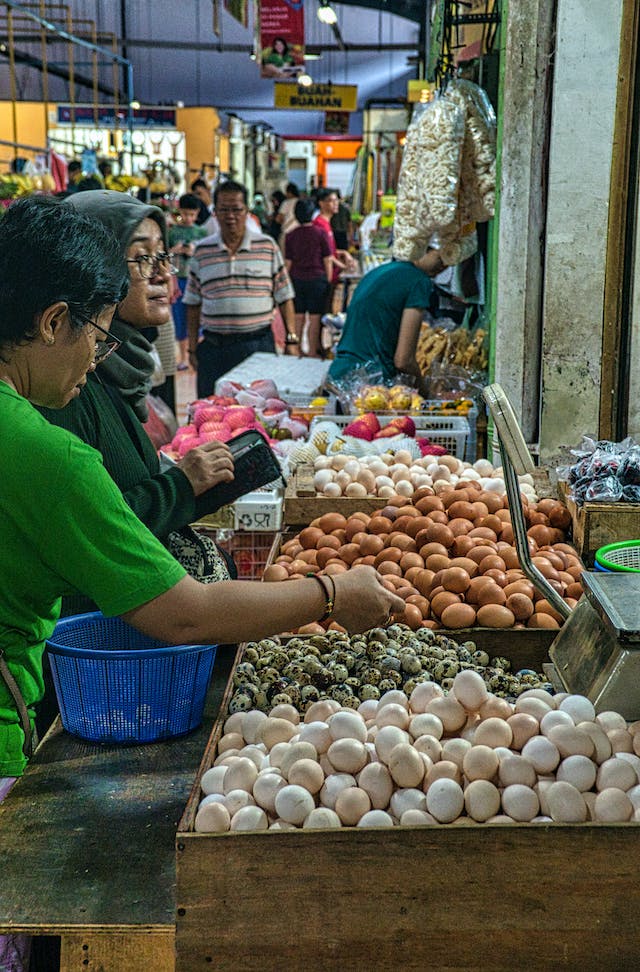The propensity to truck, barter, and exchange one thing for another is common to all men, and to be found in no other race of animals. – Adam Smith
All government, indeed every human benefit and enjoyment, every virtue, and every prudent act, is founded on compromise and barter. – Edmund Burke
Many of us are working and struggling day and night to earn money, but we might not think about what it actually is. We envision money as being a currency in the form of paper notes and coins. With technology advancing every day, there are now cryptocurrencies, bank transfers, and several payment options that are acting as money.
However, currency wasn’t always in circulation in the way we know it now. Before there were all these banks, notes, coins, and numbers on a screen, people used to get by with a barter system. This was mainly an exchange system that meant you gave something you had in return for something you wanted.
It might surprise you that the barter system still exists in the modern world, at least to a certain extent. Let’s go into the definition of bartering in some detail, then see how we can also benefit from this system today:
Definition of Bartering
Bartering was once one of the most essential tools of the ancient eras. Without a lot of real money, many people had to trade in order to get the essentials of life. For instance, they might trade a cow for seven chickens, or a table for a couple of new cooking pots.
This may seem easy, but in reality, it is one of the hardest things to do. First, you have to find someone who actually wants what you have, and then you have to come to a complete agreement on the trade. This can be tough, especially for people who live in smaller communities.
Still, there are several advantages to bartering in the current era as well. You can get rid of things you don’t want, but are still too good to throw away. At the same time, you get to benefit from your belongings by exchanging them for something that you want without any additional cost.
In the olden days, people would probably go to a barter market or wait for traders to show up in order to exchange their goods. Now, we have the advantage of technology for many activities, including bartering. To this end, here are some references to websites and books that offer a bartering system. They can also help us learn how to barter properly, so let’s take a look:
Websites:
Barterquest.com – This website offers many trade offers on books, sports equipment, family items, electronics, and just about anything else you can think of. It allows you to look at what other people want, contact them, and make offers for their items. You can work out a fair price online without having to travel at all, send off your offering, and receive whatever you want as long as the other party agrees. This site has great reviews on several other websites and is highly recommended if you want to do some international bartering.
U-Exchange.com – U-Exchange boasts over 70,000 members, all posting various different items that they would like to barter for or with. You can find different listings from all over the world, so it’s likely that you can find exactly what you are looking for at U-Exchange. Membership and listings are free, which is an added bonus.
Swap.com – Touting itself as the world’s biggest bartering marketplace, Swap.com claims that it has over a million members (and counting!). Swap.com mainly focuses on media-related items such as books, CDs, movies, video games and a lot more that you might want to trade in. If you contribute an item for swapping, you will receive credits to purchase the items you want.
Tradeaway.com – This website is similar to barterquest.com in many ways, but it has a few differences as well. One difference is that it allows you to actually buy an item if the owner so chooses. This is a great option if it’s getting difficult to work out a fair exchange, which could understandably take some time. The website will allow you to price something yourself if you choose to sell it instead of bartering. You can also make offers to sell other people’s things for them for a small fee. Finally, it’s also possible to trade for such services if you wish.
Books:
“The Complete Idiot’s Guide to Barter and Trade Exchanges” – This book comes highly recommended on Amazon to everyone interested in bartering. It’s especially useful to people who are completely new or just semi-experienced at the art of bartering. The information here teaches you how to make offers sound attractive to other people, and how to come up with fair trades quickly and painlessly. Overall, this book is a really great place to start for those new to bartering.
“Leveraging your Business with Barter: The Secret Currency” – This book teaches the secrets of bartering to any who wants to learn them. Some of its content even speculates that in the future, bartering will be one of the keys to survival. An inexpensive and easy way to learn a trade, this book is certainly a must read and could provide with a new way of life.
Interesting Bartering Facts:
If we want to start learning about bartering as a modern system, we should delve into its history as well. This is why we’ve provided a few interesting facts about bartering that are sure to interest a would-be trader:
- Bartering was first historically recorded in Egypt well over 4,500 years ago
- Even barter systems might have has a sort of currency, something that was universally recognized as being valuable.
- People have used many different things as money through history. Some examples include salt, grain, cocoa beans, cows, shark’s teeth, and precious stones. Cowry shells were once used on almost every continent for their value as ornamentation. There are still a few places where such shells could be used for buying something if you have enough of them.
- In the Catalonia region of Spain, there is a growing number of bartering and exchange markets. These barter markets do not use money. Participants bring things they do not need and exchange them for the unwanted goods of another participant. Sometimes multiple parties will get involved to make a deal work.
- Money didn’t mean an end of bartering, but it did mean that the earlier system was now less about necessities and more a matter of getting something we desired
- Bartering became quite common during the Great Depression, when luxury items were hard to come by.
Food Swaps
A certain type of modern barter system is known as a ‘food swap’. These are quite common in several areas of the United States and perhaps even in other countries. The book ‘Food Swap: Specialty Recipes for Bartering, Sharing & Giving’ is a good way to get acquainted with this practice and see how it can work for us. It’s available at the following link:
This book by Emily Paster has some cooking recipes, but is also a how-to guide that will help us make artisanal items for exchanging at food swaps. These items include a salted caramel sauce, lemon curd, green tomato salsa, cultured butter, etc.
You’ll also learn how to package your items for a creative, personalized effect. The author also touches upon how we can set up a food swap in our own locality, thus creating an enjoyable and useful experience for the whole community. Paster is a co-founder of the famous Chicago Food Swap herself, so we know she’s talking from experience.
Conclusion
While the barter system might not be the most conventional way of shopping, we’ve all performed such exchanges at some point. Children spa their toys, baseball cards, and even services from time to time.
The flexibility and versatility of bartering make it suitable for exchanges between adults as well. This way, everyone saves money and still get to enjoy something new. Even homes are exchanged, thus cutting down on traveling costs. If you look closely, you might even be bartering in some area without realizing it.


